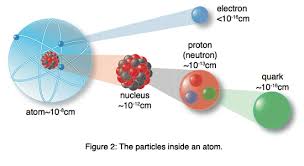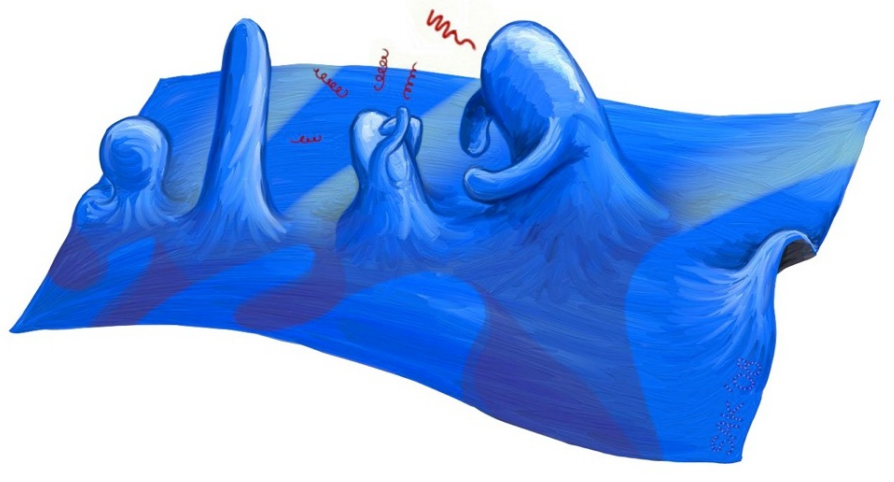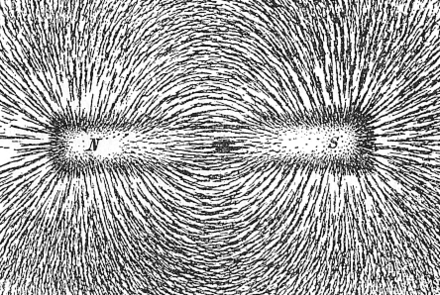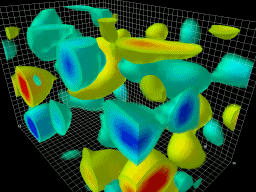What is Quantum Field Theory?

Fields
We learn in school that the basic building blocks of matter are
particles. In fact, we often continue to teach this in universities where we
explain that quarks and electrons form the lego-bricks from which all matter is made.
But this statement hides a deeper truth. According to our best laws of physics,
the fundamental building blocks of Nature are not discrete particles at all.
Instead they are continuous fluid-like substances, spread throughout all of
space. We call these objects fields.
The most familiar examples of fields are the electric and magnetic field. The ripples in these fields give rise to what we call light or, more generally, electromagnetic waves. The field emerging from a magnet is shown on the right.

From Fields to Particles
If you look closely enough at electromagnetic waves, you'll find that they are made out
of particles called photons. The ripples of the electric and magnetic fields
get turned into particles when we include the effects of quantum mechanics.
But this same process is at play for all other particles that we know of.
There exists, spread thinly throughout space, something called an electron field.
Ripples of the electron field get tied up into a bundle of energy by quantum mechanics.
And this bundle of energy is what we call an electron. Similarly, there is a quark
field, and a gluon field, and Higgs boson field. Every particle your body --- indeed,
every particle in the Universe --- is a tiny
ripple of the underlying field, moulded into a particle by the machinery of quantum
mechanics.
Why Quantum Field Theory is Hard
The quantum field is a complicated object. In part this is because it contains all of
physics: the field can describe vast numbers of particles, interacting in a myriad of
different ways. Yet, even before we get to these difficulties, there is another reason that
quantum field theory is hard.
The animation on the right shows a computer simulation of empty space. This is
what the vacuum looks like, space devoid of all particles. As you can see, it is far from
boring. The Heisenberg uncertainty relation means that a quantum field cannot sit still.
Instead, it froths and boils, a bubbling soup of particles and anti-particles, constantly
created and destroyed.
This complexity is what makes quantum field theory hard. Even nothingness is
difficult to understand in quantum field theory. As you start to add particles, the
vacuum gets distorted in interesting ways. The goal of much of my research is to
understand this distortion, how it results in different interactions between particles
and, ultimately, how this gives rise to the many beautiful aspects of Nature that we
see around us. This is difficult. Many decades after quantum field theory was
discovered, we are still a long way from understanding all the subtleties that it contains.
- © David Tong, d.tong@damtp.cam.ac.uk. The simulation of vacuum fluctuations is by Derek Leinweber.


